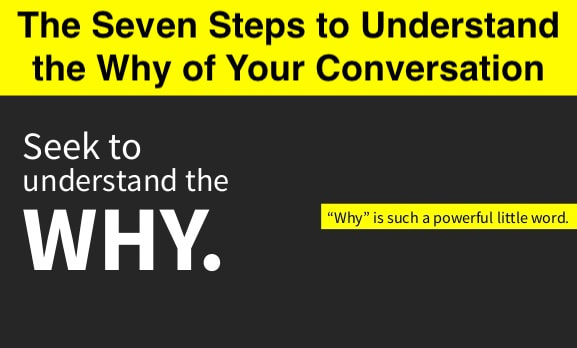New Research Reveals The True Impact of Conversations Throughout our lives, we hold millions and millions, perhaps even billions, of conversations. British writer, Gyles Brandreth, once calculated that we speak 860,341,500 words in a lifetime1. Many of these conversations flow naturally with ease. Others may be confusing, exciting, intriguing, saddening, frightening, and so much more. But the ones that are most memorable oftentimes fit into two simple categories: positive and negative.
The positive conversations consist of concepts like life advice, “kicks in the butt”, loving messages, caring gestures and a listening ear. The negative conversations, though, are made up of tough feedback, difficult news, challenging conflict and harmful consequences. Research, widely accepted on negativity bias, from Rozin and Royzman says “organisms are genetically predisposed toward greater weighting and attention to negative events“4 Therefore, if it is a negative conversation, it will leave a lasting impact on our relationships, our perspective and, most importantly, our brain. Some have gone as far as to claim that negative experiences have an impact that is 3x stronger than positive experiences3. So why do we care? Conversations are no longer just a way of sharing information. Through our evolution and breakthroughs in research, we now know that conversations trigger changes: physical, chemical and emotional, inside our bodies and brains. Therefore, if negative conversations have a greater impact on us than positive ones and our actual brains and neurochemistry change during conversations, we must make specific modifications to the way we hold conversations, deliver feedback and facilitate those difficult ever day conversations. However, the problem is simple: oftentimes in school, at home and within the workplace, we never truly learn how to communicate or how to convey difficult news. According to Conversational Intelligence, “conversations are the way we connect, engage, navigate, and transform the world with others”2. If this is true, then we must teach ourselves, our workplaces, our communities and our children how to communicate, more specifically how to deliver difficult conversations, in a way that cuts down on defensiveness, garners a growth mindset and diminishes the impact of negativity bias. The Learning Laboratory Years ago, we were working with a young director with ambition, promise and one glaring problem: her communication skills. She had built quite a reputation for being overly stern, impatient with others and blunt in her feedback. When placed in one-on-one coaching, we embarked on a journey with one objective in mind: develop the ability to have uncomfortable conversations with candor, compassion and courage. Now, fast forward months into our coaching partnership, this driven individual was tasked with one of her toughest conversations yet, and she wasn’t backing down. As she brought the situation to our coaching session, all of the joy, curiosity and energy sparked inside of me. After months of intense coaching and practice, she was finally going to utilize everything we have learned throughout our journey together. Coaching Tips This process for navigating difficult conversations has culminated from decades of experience and work with executives, leaders and managers from every industry across the nation, none more impactful than this client. As we embark on this journey together, this client and her example will provide key learnings and application of the process.
0 Comments
The Seven Steps to Understand the Why of Your Conversation Have you ever walked into a conversation or meeting and had no idea what you were there to do? Has your spouse ever said, “go deal with your child” and you didn’t even know what they had done?
These may seem like excess examples, but these types of situations happen to us all the time in varying degrees. Sometimes it is as simple as we didn’t do the proper research before a conversation and are unprepared to discuss the topic. Other times, we have inaccurate “facts” that get in the way of our conversations. The Learning Laboratory There are hundreds of books about discovering our why. If you take that concept a step further, it is critical to uncover our “why” when it comes to a difficult decision. Truly understand the situation and our motives is essential to delivering tough news with ease. Our brain, the incredible intelligent system it is, designs neuropaths that make us jump to conclusions and make assumptions in a nanosecond. And, the worst part is that nanosecond happens in our Amygdala, the fear center of our brain. When we jump to these conclusions, as we do too often in difficult conversations, we make assumptions about harmful intentions, careless acts and hurtful behaviors. Coaching Tips When delivering dignified dialogue, we teach a nine-step model specially designed to make giving tough news more comfortable. The first step seems simple but is critical to a conversation’s success: Uncovering the Purpose. Below is the process our clients walk through to determine the purpose:
|
Details
Archives
June 2020
Categories |


 RSS Feed
RSS Feed
